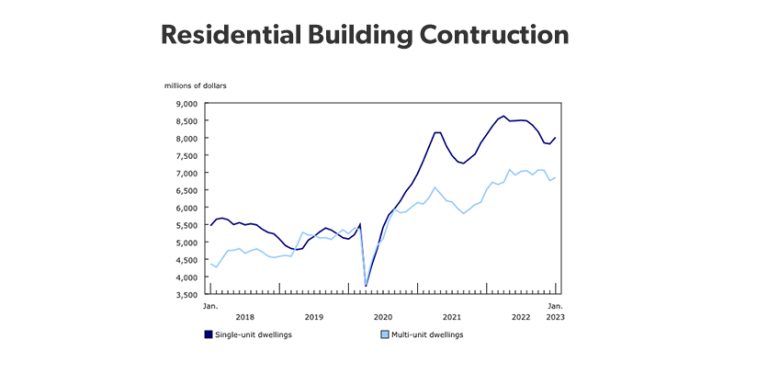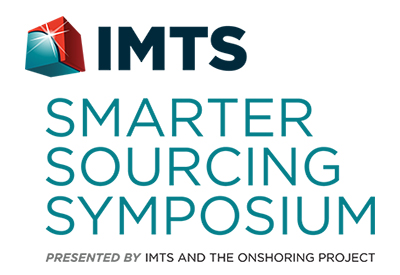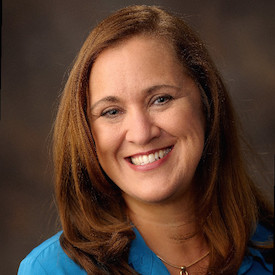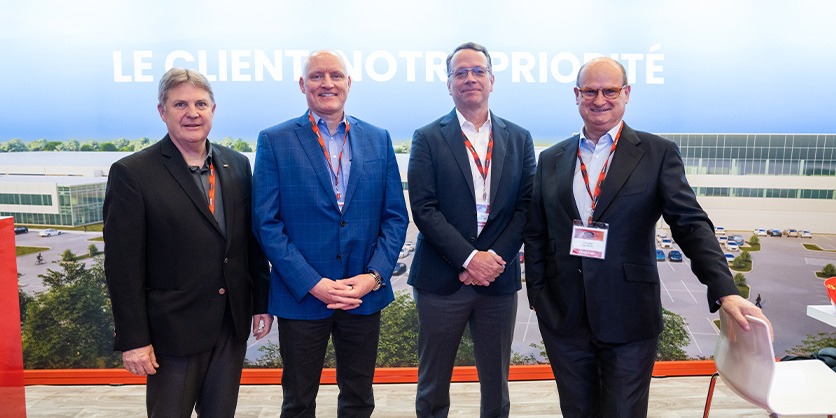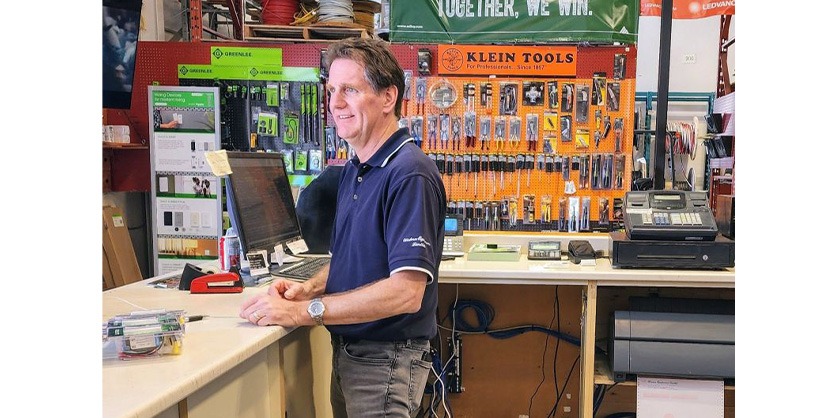Looking Back on the Nexans Innovation Summit in Discussion with Tim King & Hugo Lafontaine

October 27, 2025
By Blake Marchand
Nexans’ 2025 Innovation Summit held at the Royal Fairmont York in Toronto this October, called for strong leadership as we transition toward an electricity-based economy.
The evening consisted of a Fire Side Chat, two expert panels, an award ceremony from Nexans Innovation Challenge, a Chris Hadfield Keynote, and closing remarks from Nexans’ Tim King.
The panels discussed technologies, strategies, and trends, including a unified power grid across Canada, the importance of policy signals, grid modernization as well as the importance of collaboration. While the keynote speaker, Chris Hadfield spoke to the importance of strong leadership and Canada’s capacity to innovate.


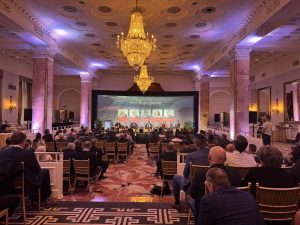

There was an overarching sentiment that the technologies are available, and we need to implement them on a larger scale, but strong leadership is required to bridge the gap between planning and action.
“We all have a very good idea about how to solve the challenges,” noted Nexans’ Tim King following the event. “We all understand what the challenges are. I think we all agree that now, it is about making decisions, working together with government – we can’t wait for government, but we will need support from the government for clear signals and policy to support the electrification.”
The leadership piece is key to push electrification forward. Manufacturers, utilities, and government need to show leadership in the planning and implementation of innovative solutions to address current challenges.
“Being from the industry,” King clarified, “I am not expecting government to solve the problems, but I am expecting them to help provide a roadmap and clear signals for industry.”
King noted that Canadian utilities are providing them with long-term visibility on their plans to add capacity and transmission lines, “because what that will do for us is– that will enable us to make the investments now to support them when they need it.”
“The challenge we have as a company is how much, where, and when do we make the big investments that are going to be needed,” he said.
“The clearer signals we get, then the more we can be making those investments today, because adding capacity, adding infrastructure sometimes it takes two, three years in order to add that additional capacity and agility into our manufacturing.”
Unified Canadian Grid
There were a lot of interesting discussions at the Nexans Innovation Summit. One of the topics that stuck out for me was the importance of a more unified Canadian electrical grid can have on improving reliability, efficiency, and enabling electrification.
We are seeing the beginning of partnerships being made between utilities, if you look to Quebec and Newfoundland & Labrador, for example.
King noted that Canada has a uniquely diverse mix of electricity generation from hydro (60%), nuclear (14%), natural gas (11%), wind (6%), and solar (1%).
“This is something unique. You move around the world,” King said, “nobody can produce the electricity that Canada can produce.”
King emphasized that Canada is uniquely positioned to develop innovative solutions with a diverse supply mix that is largely renewable already. As the one of the panelists mentioned, there are innovative solutions being implemented across Canada but many of them are on a small scale or in the pilot stage. The next step becomes learning from those pilots and implementing the solutions and strategies on a larger scale.
Collaboration is key to that, between companies like Schneider and Nexans with common goals and complimentary solutions – as well as between utilities, regulators, and governments.
That was echoed by Hugo Lafontaine during our discussion following the event, “there’s no one company, no one solution,” he said. “It will take partnership, it will take multiple companies, and multiple utilities getting together to make it happen.”
I asked Lafontaine about what a unified grid might look like practically and some of the complexities and challenges.
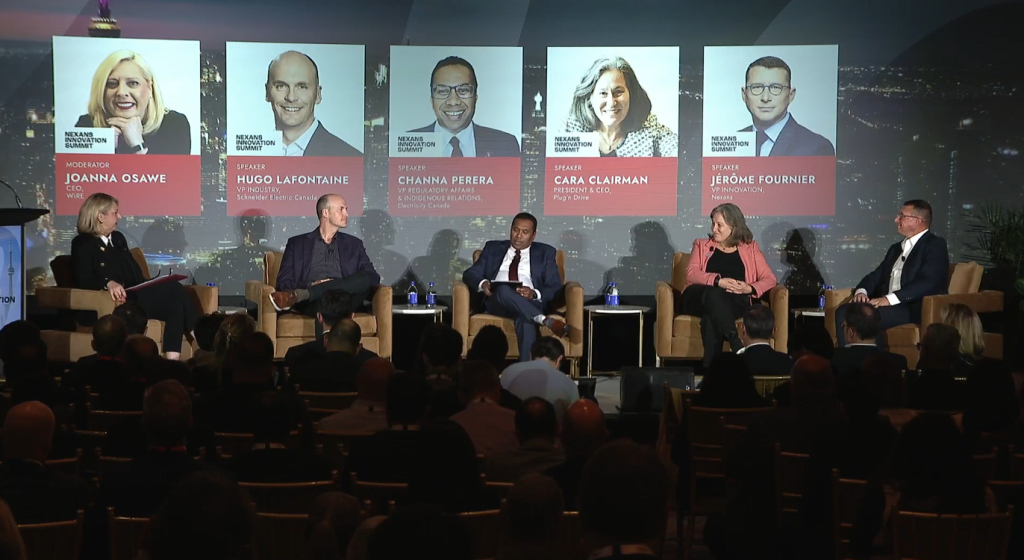
Lafontaine explained Canada would need to come together on policy in terms of providing a unified permitting process and from a regulatory standpoint on where generation is coming from and how it is managed. Certainly, no small task. Each province has a firmly established regulatory and energy management/planning systems. However, building toward a system that is more interconnected can help solve some challenges of the current landscape in meeting increased demand sustainably.
“The policy is really around, how do we have a one-stop shop for municipalities, for provinces, and at the federal level,” noted Lafontaine, “when I want to build something, I need my permit, where do I go?”
A more likely scenario might be that provinces and utilities begin establishing more partnerships.
“I’m hoping that,” he said, “let’s say that we don’t rely federally, but we can have partnerships among some provinces. That would be the next best case, right? And we’ve seen with Quebec and Newfoundland & Labrador and New Brunswick and Nova Scotia, like we’re starting to see some of the kinks ironing out.”
“The challenge is [the provinces & territories] all have their different grids, they’re aged differently, they’re advanced or less advanced, depending on where you’re at; some are experts in hydro technology, some are experts around like nuclear and gas plants. Some provinces, they have a ban on nuclear, some provinces are buying more power from other provinces.”
“So, all that interconnection creates a bit of complexity,” Lafontaine said, “when a utility is facing that, okay, I got to deal with software, major changes, I got to incorporate new grid, I got to deal with regulation, I got to deal with load balancing… it’s overwhelming.”
Lafontaine’s focus and expertise with Schneider is the technology component, which can help bridge some of the complexities and intricacies of Canada’s diverse electrical grid and generation mix. Technology can also be leveraged to improve the efficiency of the infrastructure already in place.
“By the time you generate, you generate an electron from a dam or a plant, you know, especially dams that are typically far, you put on the transmission line, it gets to your distribution area, you downshift, you put the voltage down, you convert it, you distribute it: you’ve lost almost 50%,” Lafontaine explained.
“There’s a lot of energy loss in the whole process, so how can we leverage the existing infrastructure and generate more energy, right?”
Lafontaine said Schneider’s approach is centered around partnerships, understanding what utility goals are and establishing a long-term plan.
“The challenge today is, how do we take all this ecosystem and find a solution that will fit all? It doesn’t work. You have to go in case per case, right now.”
“You’ve got to break it apart. What are the steps? What are the milestones?”
Local Energy
A lot of interesting applications of new technologies are beginning to round the corner, if you look at some of the pilot projects and new solutions utilities are exploring and implementing. A few examples: BC Hydro has launched a field test of vehicle-to-grid using electric school buses; PUC was recognized at the 2024 EDA Award Gala for their Sault Smart Grid project; there is the IESO York Region Non-Wires Alternatives Demonstration Project; Enova recently announced they are exploring local energy procurement; Saint John is developing an advanced digital grid to allow for more clean energy adoption.
From a regulatory perspective, Lafontaine noted Ontario and Alberta are innovative in how they are enabling more local generation.
“They say, you know what,” he said of Ontario and Alberta, “we’re going to deregulate a bit of it, allowing private companies and entities to start distributing power and potentially even generating power and then managing their own virtual power purchasing agreements, and the way that they can manage a local area, the generation, and then distributing to parties.”
“We got to make a lot more energy local,” Lafontaine said.
A perfect scenario for Lafontaine would be a more robust prosumer ecosystem, local energy generation, solar on housing, EV batteries and energy storage that can be leveraged by the grid. But ultimately, implementing new technologies takes time, costs money, and incentives are required to tip the scale. On the other side, the grid needs, a “system in place to manage the quality of the power, the risk management, the balancing,” to integrate those distributed energy resources.
Confidence to Lead
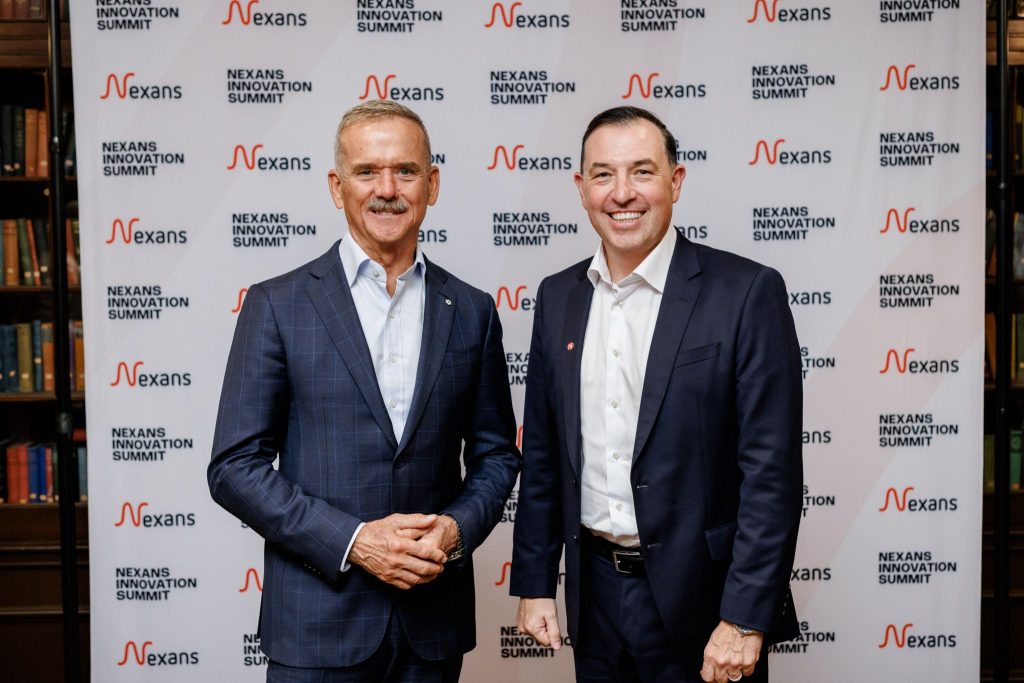
Overall, Nexans Innovation Summit highlighted the importance of bold leadership, fostering innovation, and shifting from planning to action. The utility landscape is complex and has a deeply embedded risk adverse culture. The challenge becomes, maintaining that integrity while also taking the next step toward new technologies and innovative solutions.
“That is what’s going to be needed, for Canada and Canadians, is to take that next step,” King said.
“I think having Chris Hadfield come in and really connect the dots around how Canada, in our history, has at times, batted above our average. What we’ve done is we have been significant players in driving significant innovation and technology.”
For King, that is the next step that needs to be taken, “It’s the confidence to lead not just the confidence to follow.”

